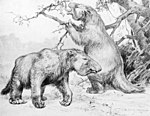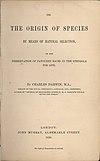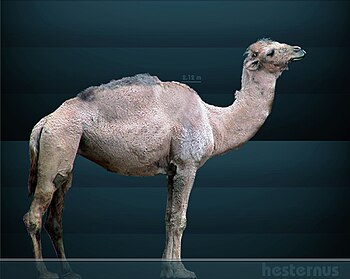IntroductionThe Quaternary (/kwəˈtɜːrnəri, ˈkwɒtərnɛri/ kwə-TUR-nə-ree, KWOT-ər-nerr-ee) is the current and most recent of the three periods of the Cenozoic Era in the geologic time scale of the International Commission on Stratigraphy (ICS). It follows the Neogene Period and spans from 2.58 million years ago to the present. As of 2023, the Quaternary Period is divided into two epochs: the Pleistocene (2.58 million years ago to 11.7 thousand years ago) and the Holocene (11.7 thousand years ago to today); a third epoch, the Anthropocene, has recently been proposed, but it is not officially recognised by the ICS. The Quaternary Period is typically defined by the cyclic growth and decay of continental ice sheets related to the Milankovitch cycles and the associated climate and environmental changes that they caused. (Full article...) Selected article on the Quaternary prehistory world and its legacies Subfossil lemurs are lemurs from Madagascar that are represented by recent (subfossil) remains dating from nearly 26,000 years ago (during the late Pleistocene) to approximately 560 years ago. They include both living and extinct species, although the term more frequently refers to the extinct giant lemurs. The diversity of subfossil lemur communities was greater than that of present-day lemur communities, ranging from as high as 20 or more species per location, compared with 10 to 12 species today. Extinct species are estimated to have ranged in size from slightly over 10 kg (22 lb) to roughly 160 kg (350 lb). Despite their size, the giant lemurs shared many features with living lemurs, including rapid development, poor day vision, relatively small brains, and lack of male dominance. They also had many distinct traits among lemurs, including a tendency to rely on terrestrial locomotion, slow climbing, and suspension instead of leaping, as well as a greater dependence on leaf-eating and seed predation. The giant lemurs likely filled ecological niches now left vacant, particularly seed dispersal for plants with large seeds. There were three distinct families of giant lemur, including the Palaeopropithecidae (sloth lemurs), Megaladapidae (koala lemurs), and Archaeolemuridae (monkey lemurs). Two other types were more closely related and similar in appearance to living lemurs: the giant aye-aye and Pachylemur, a genus of "giant ruffed lemurs".(see more...) Selected article on the Quaternary prehistory in human science, culture and economics
On the Origin of Species, published in 1859, is a work of scientific literature by Charles Darwin which is considered to be the foundation of evolutionary biology. Darwin's book introduced the scientific theory that populations evolve over the course of generations through a process of natural selection. It presented a body of evidence that the diversity of life arose by common descent through a branching pattern of evolution. Darwin included evidence that he had gathered on the Beagle expedition in the 1830s and his subsequent research findings. Ideas about the transmutation of species were controversial as they conflicted with beliefs that species were unchanging parts of a designed hierarchy and that humans were unique and unlike animals.
The book was written for non-specialist readers and attracted widespread interest upon its publication. As Darwin was an eminent scientist, his findings were taken seriously and the evidence he presented generated scientific, philosophical, and religious discussion. Within two decades there was widespread scientific agreement that evolution, with a branching pattern of common descent, had occurred, but scientists were slow to give natural selection the significance that Darwin thought appropriate. During the "eclipse of Darwinism" from the 1880s to the 1930s, various other mechanisms of evolution were given more credit. With the development of the modern evolutionary synthesis in the 1930s and 1940s, Darwin's concept of evolutionary adaptation through natural selection became central to modern evolutionary theory, and it has now become the unifying concept of the life sciences. (see more...) Selected image
Did you know?
Need help?Do you have a question about Abyssal/Portal:Quaternary that you can't find the answer to? Consider asking it at the Wikipedia reference desk. TopicsGeochronology - Quaternary (Pleistocene - Holocene) Quaternary landmasses - Major Quaternary events - Quaternary biota appearances - Fossil sites - Stratigraphic units - History - History of paleontology - Timeline of paleontology Researchers - Culture - Treatise on Invertebrate Paleontology - Vertebrate Paleontology Quality ContentFeatured Quaternary prehistory articles - Good Quaternary prehistory articles - SubcategoriesThings you can doRelated contentAssociated WikimediaThe following Wikimedia Foundation sister projects provide more on this subject:
|



















